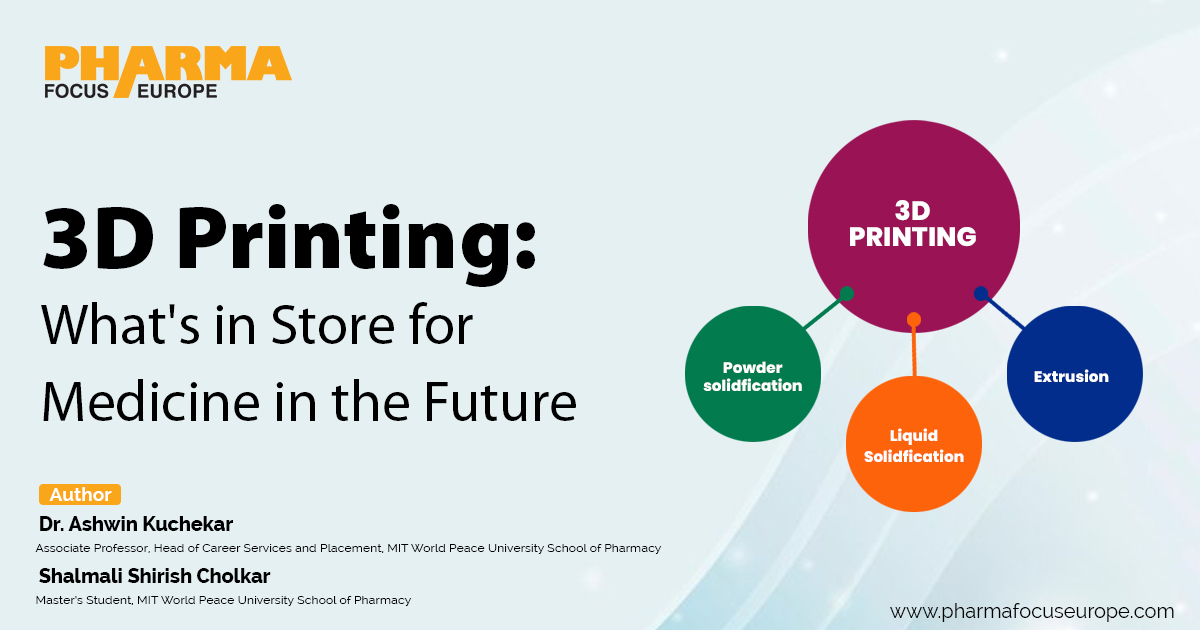3D Printing: What's in Store for Medicine in the Future

Strong 8k brings an ultra-HD IPTV experience to your living room and your pocket.
3D printing technology is a globally emerging technology in the field of medicine that has a great potential of improving the quality of life and changing the way pharmaceuticals are manufactured. By layering material into a product, 3D printing technology generates complex geometric structures through a digitally controlled process.
3D printing technology, also known as additive manufacturing, is a digitally controlled technique of fabricating a product by layer-wise addition of the feed material to generate complex geometric structures. This technique has wide applications in the fields of mechanics, consumer goods, electronics, aeronautics, medicine, the food industry, and various other fronts.
The manufacturing process of pharmaceuticals has progressed from batch process to continuous process and now to printing.3D printing technology started gaining increased attention in the pharmaceutical field after the USFDA approval of the first 3D printed pill Spritam®, by Aprecia Pharmaceuticals in 2015. This technology has been utilized for the printing of medical devices, dental implants, artificial organs, research prototypes, tailored dosage forms, drug fabrication, and specialty surgical instruments. It offers great flexibility which justifies its use in a wide range of settings, including educational institutions, hospitals, and even households. Globally, numerous industry experts have predicted the use of 3D printing technology for centralized manufacturing of pharmaceuticals, veterinary medicine, and in the early phases of clinical trials over the span of the next 5 years.
Principles and techniques of 3D printing:
3D printing of pharmaceuticals can be carried out using feed materials like particles, particle colloids, plastic powders, polymers, polymer solutions, gels, polymer-particle composites, or continuous thin sheets.
1. Powder solidification is carried out by techniques like selective laser sintering and binder jetting.
Selective laser sintering: This 3D printing process involves the use of a laser beam to fuse the powder particles in successive layers to create the final structure. However, there are chances of degradation of the drug due to the high process temperature generated by the laser.
Binder jetting involves the use of binder material to successively join the layers of powder leveled on a powder bed.
2. Liquid solidification is carried out by the techniques of stereolithography and inkjet printing.
Stereolithography: It involves the use of a light beam to cause layer-wise solidification of a photosensitive resin placed in a tank. The dosage form can be fabricated from bottom to top or top to bottom. This technique is capable of attaining a good resolution of the printed product and also the speed of printing. As heat is not generated during the printing process, this process is suitable for printing dosage forms containing thermolabile drugs.
Inkjet printing: This process of 3D printing involves heating the ink fluid with the help of a micro-resistor, creating a bubble of vapor that expands and forces the ink to drop out of the nozzle.
3. Extrusion of the feed material is carried out by techniques of fused deposition modeling and semisolid extrusion.
Fused deposition modeling: This is the most widely used and investigated method of 3D printing of dosage forms. It involves layer-wise deposition of a molten polymer filament of a thermoplastic polymer. This technique is not suitable for dosage forms containing drugs that can undergo thermal degradation. The critical process and equipment parameters for this type of 3D printing include the printer nozzle size, layer height, build platform temperature, printing speed, and printing pattern.
Semisolid extrusion: It involves the extrusion of plastic semisolid material from a syringe by a pneumatic, mechanical or solenoid-based system. The material hardens on cooling. Disposable or pre-filled syringes can be used for printing the dosage form.
Procedure of 3D printing:
3D printing starts with the creation of a virtual 3D design of the object using digital design software like AutoCAD, SolidWorks, Autodesk, etc. The steps involved in the 3D printing process are mentioned in the following figure.
Explore more: https://www.pharmafocuseurope.com/information-technology/printing-what-store-medicine-future
Note: IndiBlogHub features both user-submitted and editorial content. We do not verify third-party contributions. Read our Disclaimer and Privacy Policyfor details.







